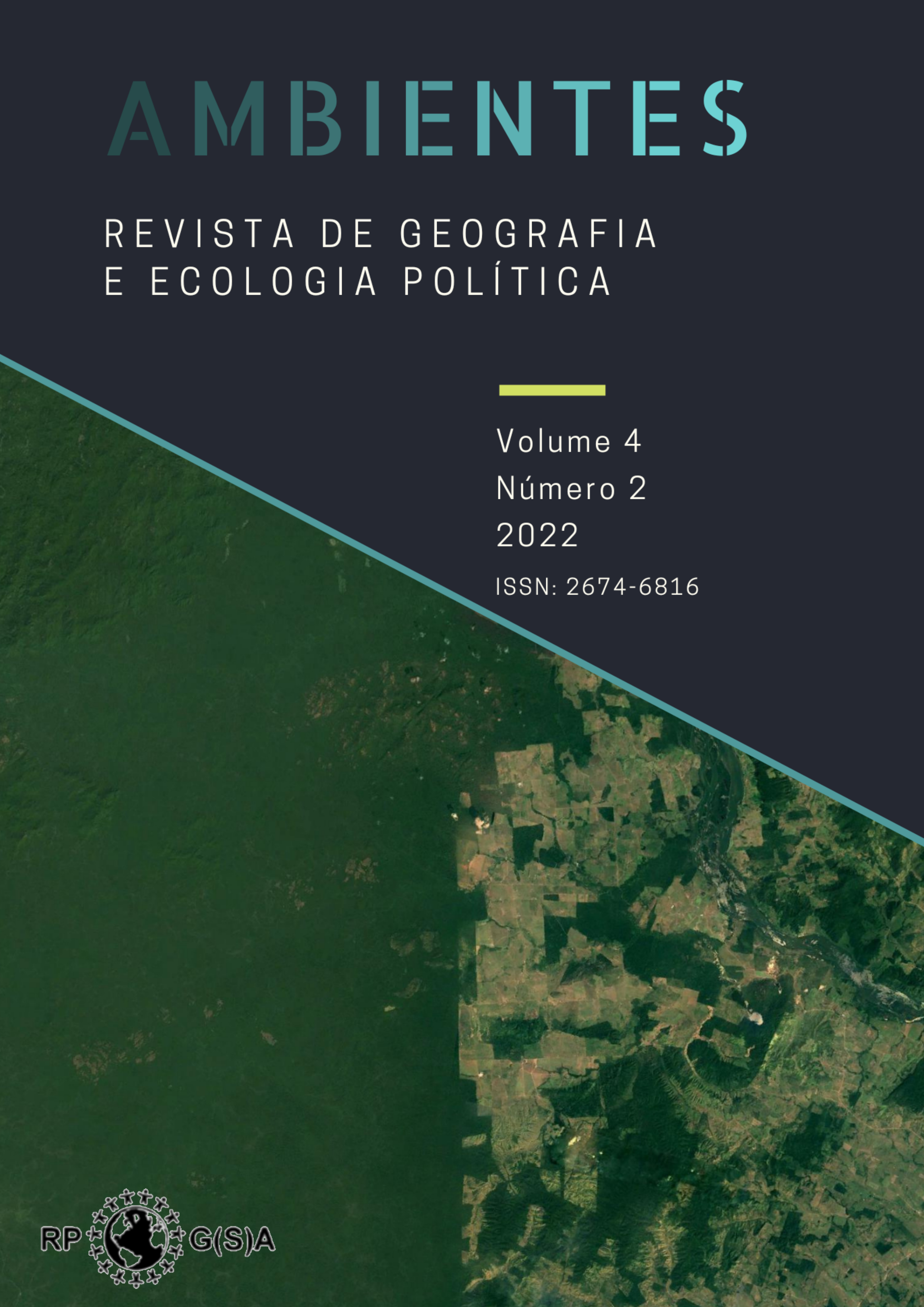El “cautiverio ambiental”: Presentando una problemática (e ilustrando con dos ejemplos amazónicos)
DOI:
https://doi.org/10.48075/amb.v4i2.30323Resumen
En Brasil, diversos grupos sociales han obtenido conquistas de orden territorial con base en instrumentos jurídico-ambientales al “ambientalizar” sus luchas, como viene sucediendo con la creación de “Unidades de Conservación de Uso Sustentable” y “Asentamientos Ambientalmente Diferenciados”. Pese a ello, al depender de la normativa vigente, existen graves restricciones a las actividades que aseguran la reproducción socioeconómica de estos grupos, como lo son la caza, la pesca y la agricultura. El objetivo del presente trabajo es presentar y colocar en debate una problemática basada en la noción de “cautiverio ambiental” y de que forma esta, a la luz de la Geografía y la Ecología Política, puede auxiliar el análisis de ciertos tipos de conflictos ambientales. Los ejemplos de los “Proyectos de Desarrollo Sustentable” (PDS) Esperança e Virola Jatobá, situados en Anapu, Pará, son utilizados como base para la presente reflexión. Sin embargo, la discusión también puede ayudar en la comprensión de casos semejantes localizados en otros espacios. El análisis desarrollado es esencialmente teórico-conceptual y se apoya en revisión de literatura, documentos y reportajes, así como en investigaciones anteriores sobre los referidos asentamientos de reforma agraria. Por medio de la reflexión propuesta creemos que es posible entender los motivos por los cuales sujetos que lucharon para huir del cautiverio de la tierra sienten que ahora se encuentran bajo un cautiverio de orden ambiental, así como algunas otras implicaciones de lo que genera este sentimiento.
Palabras clave: Cautiverio Ambiental; PDS; Amazonia; Anapu; Desterritorialización.
Descargas
Publicado
Cómo citar
Número
Sección
Licencia

Esta obra está bajo una licencia internacional Creative Commons Atribución-NoComercial-CompartirIgual 4.0.
Aviso de Direito Autoral Creative Commons
Política para Periódicos de Acesso Livre
Autores que publicam nesta revista concordam com os seguintes termos:
1. Autores mantém os direitos autorais e concedem à revista o direito de primeira publicação, com o trabalho simultaneamente licenciado sob a Licença Creative Commons Attribution que permite o compartilhamento do trabalho com reconhecimento da autoria e publicação inicial nesta revista.2. Autores têm autorização para assumir contratos adicionais separadamente, para distribuição não-exclusiva da versão do trabalho publicada nesta revista (ex.: publicar em repositório institucional ou como capítulo de livro), com reconhecimento de autoria e publicação inicial nesta revista.
3. Autores têm permissão e são estimulados a publicar e distribuir seu trabalho online (ex.: em repositórios institucionais ou na sua página pessoal) a qualquer ponto antes ou durante o processo editorial, já que isso pode gerar alterações produtivas, bem como aumentar o impacto e a citação do trabalho publicado (Veja O Efeito do Acesso Livre).
Licença Creative Commons
Esta obra está licenciada com uma Licença Creative Commons Atribuição-NãoComercial-CompartilhaIgual 4.0 Internacional, o que permite compartilhar, copiar, distribuir, exibir, reproduzir, a totalidade ou partes desde que não tenha objetivo comercial e sejam citados os autores e a fonte.


